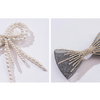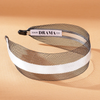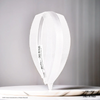The rules of using a dry shampoo
One of the most common hair problems faced by women is an oily scalp, which makes your hair look dull and just so boring. Girls who have oily hair need to wash their hair more often, which leads to hair loss and breakage. Here, the role of dry shampoo comes as a saviour and can be used without water. To make most of this product, here's what you need to know about this mighty shampoo.
What is a dry shampoo?
This shampoo comes in an aerosol can, which is in powder form and is used without water. It is usually made with corn or rice starch, which soaks up the greasiness on the scalp and makes your hair look fresh. All you need to do is spray and let the powder work its magic. As it is a powder, it makes your hair look dull, with its white colour.
Why you need it?
This genius bottle can make your greasy hair look fresh in a jiffy and is a must-have in every girl's bag. From lazy days to impromptu plans, this shampoo can come as a saviour.
How to apply?
When spraying, keep one finger distance from your scalp, this way the shampoo with spread evenly. Also, don't apply directly to the head. Apply it section by section and spray on the root area. Lastly, massage the product into the scalp and wait for a few minutes and brush it through to get rid of the residue.
How to choose?
There's a lot to choose from. These shampoos come in a lot of variety for every hair texture. From scented to volume-enhancer, you can also invest in coloured shampoo to match your hair colour.
How often can you use it?
The shampoo is not a replacement for a regular hair wash. You can use them in between hair washes and not on a daily basis. It best for days you are travelling or your hair is too oily.
Is it safe?
The shampoo is safe to use. However, overusing the shampoo can lead to product-build up and make your hair too dry. As it soaks up the natural oil, it's not suited for very dry scalp or hair, as it can lead to flaking and dandruff. Over-use of the shampoo can leave a residue behind, which can also affect the facial skin.




